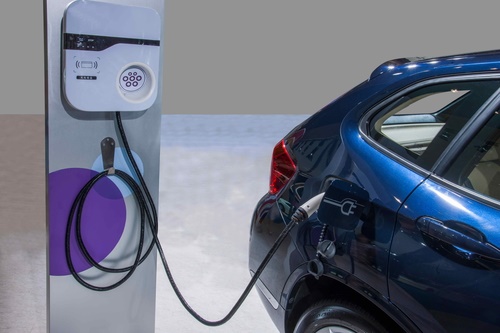Green Vehicle Maintenance is also required by many car owners. Many cars on the road these days are green, meaning that they reduce pollution and run more efficiently. Because a large number of newer vehicles these days are designed to consume less fuel, it’s possible you could even be driving one of the greenest gasoline vehicles and not know it. Regardless of the vehicle you drive, caring for it typically requires the same maintenance procedures—tire rotations, for example. Here is a look at a few green-vehicle types and how to care for them.
Battery Electric Vehicles
These vehicles run on renewable energy sources such as solar panels. Systems not related to the engine typically need maintenance like a traditional car does. For example:

- Rotate and balance tires per manufacturer guidelines. Tire rotation intervals are the same as in any other car.
- Don’t worry too much about your brakes. Your car uses regenerative braking, helping your brake pads enjoy much longer lifespans.
- Replace thermal coolant, brake fluid, washer fluid and wiper blades as needed. Wiper blades are commonly replaced once or twice a year.
- No need to take your car in for oil and filter changes.
You should have to replace your electric battery pack only after quite a few years. Over time, the batteries become less efficient. Warranties typically cover these packs for eight to 10 years, or 100,000 to 150,000 miles.
Hydrogen-Powered Vehicles
These vehicles are not as “green” as battery electric vehicles, but they are still pretty friendly. In addition, they can go about three times as long between refills. Follow the same basic maintenance guide suggested for battery electric vehicles. Again, no need to ever take your vehicle in for oil changes and the like. Your biggest challenge is likely finding places to fill up, so caring for this green vehicle means planning ahead on trips.
Hybrids
Hybrid cars use batteries, an electric motor and a gasoline engine. Some are full, some are plug-in, and some are mild hybrids. Hybrids do not require special maintenance schedules beyond what you would perform for a traditional car. However, you should expect to pay a little more for coolant changes on some models such as the Toyota Highlander, as they are more complex and time-intensive. Hybrid batteries last a long time, even up to 200,000 miles, and have extensive warranty coverage.
Additional Vehicles
Other “green” technologies in cars include diesel, biodiesel, ethanol and compressed natural gas. Each type has its own advantages and disadvantages. For example, ethanol cars can have worse fuel economy, but on the plus side, driving ethanol reduces the need for oil. No matter what type of car you drive, though, you’ll need to perform regular maintenance in many areas such as wiper blades, tires and coolant like you would a traditional car.
Conventional Vehicles
You can use green principles even if you drive a conventional vehicle. For example, avoid weighing down your vehicle when possible; more weight means more fuel consumption. Perform regular maintenance such as:
- Oil changes
- Tire inflation
- Tire rotation
- Spark plug replacements
- Air filter changes
Best practices include making gradual starts and stops, and driving 65 to 70 miles per hour on highways as opposed to driving 75 to 85 miles per hour. Also,
- Avoid engine idling for more than a minute.
- Opt for “stop-start” engine technology.
- Park in shady areas to save on fuel and to help your car stay cooler.
- Look for vehicles with numbers exceeding 40 miles per gallon when you shop for a new vehicle.
Always check your manufacturer guides, and feel free to contact an automotive specialist at All Around Auto if you have any questions.
Frequently Asked Questions
1. What maintenance does a Battery Electric Vehicle (BEV) require?
BEVs, powered by renewable energy, demand standard upkeep like tire rotations and fluid replacements. Unique to BEVs is regenerative braking, reducing brake pad wear. While oil changes are unnecessary, the electric battery pack may require replacement after several years.
2. How should Hydrogen-Powered Vehicles be maintained?
Hydrogen-powered vehicles share maintenance similarities with BEVs, emphasizing tire care and fluid checks. Avoiding oil changes is a perk, but planning fueling stops is crucial due to limited hydrogen stations.
3. What maintenance is needed for Hybrid vehicles?
Hybrids, blending batteries and gasoline engines, follow conventional maintenance routines with some exceptions. Although hybrids don’t demand specialized upkeep, certain models may require pricier coolant changes due to complexity.
4. Are there other “green” vehicle technologies and their maintenance requirements?
Yes, alternative technologies like diesel, biodiesel, ethanol, and compressed natural gas each have unique maintenance needs. Despite differences, routine tasks such as tire care and fluid checks remain vital.
5. Can green maintenance practices be applied to conventional vehicles?
Absolutely. Even traditional vehicles benefit from eco-conscious maintenance. Simple habits like regular oil changes and tire care contribute to fuel efficiency and overall vehicle health.
6. What are some best practices for maintaining conventional vehicles with green principles?
Optimal vehicle maintenance involves habits like avoiding excessive weight and adhering to regular maintenance schedules. Strategies like gradual starts and stops and parking in shaded areas further enhance fuel efficiency.
7. How can consumers choose fuel-efficient vehicles?
When selecting a new vehicle, prioritize fuel efficiency ratings exceeding 40 miles per gallon. This ensures reduced fuel consumption and environmental impact.
8. Why is regular maintenance important for all vehicle types?
Regular maintenance, including tasks like oil changes and tire care, ensures optimal vehicle performance and longevity. Regardless of vehicle technology, routine upkeep is essential.
9. Where can individuals find detailed maintenance guidelines for their vehicles?
Manufacturer guides offer comprehensive maintenance instructions tailored to specific vehicle models. Seeking advice from automotive specialists like All Around Auto is also advisable for personalized assistance.
10. How does green vehicle maintenance contribute to sustainability?
By adopting eco-conscious maintenance practices, individuals promote environmental sustainability while ensuring optimal vehicle performance. Consistent upkeep not only extends the lifespan of vehicles but also reduces their environmental footprint.



